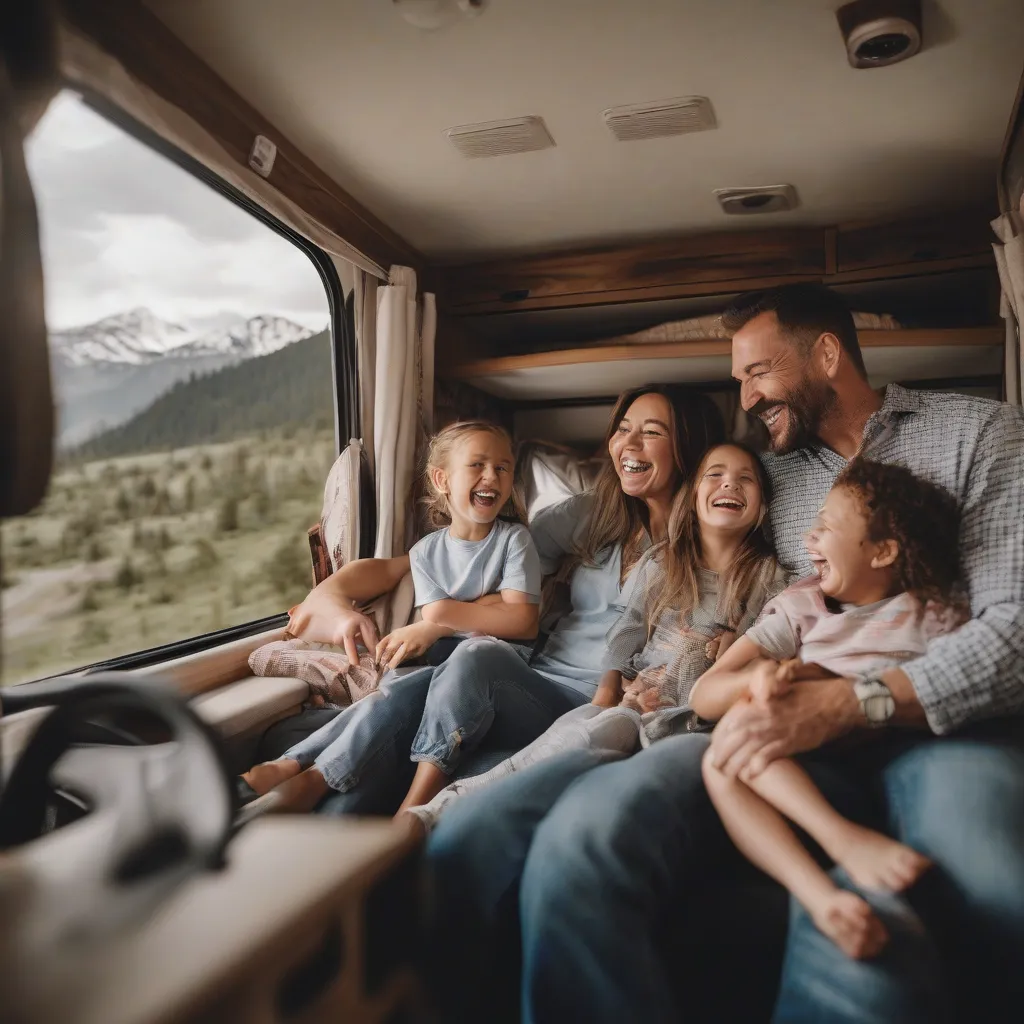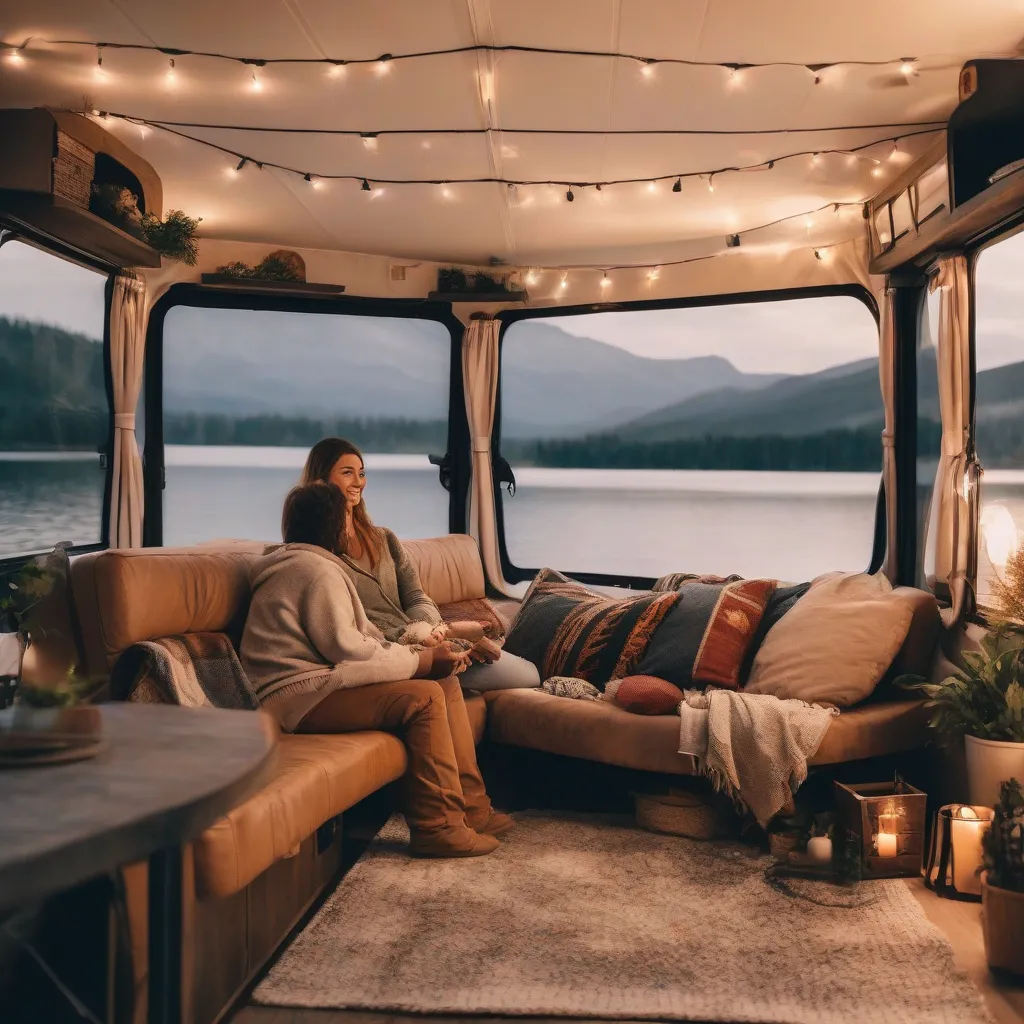“Adventure awaits, they say, but how many adventurers can my RV hold?” Sound familiar? It’s a question every RV enthusiast ponders, especially when planning a trip with family or friends. The open road calls, promising freedom and unforgettable memories, but figuring out the perfect RV occupancy can feel like navigating a roundabout for the first time!
Don’t worry; we’re here to guide you. In this comprehensive guide, we’ll explore the ins and outs of RV travel, focusing on how many people can comfortably (and safely) join the ride. Buckle up, and let’s hit the road!
Understanding RV Occupancy Limits
Before we dive into the specifics, let’s address the elephant in the room – or should we say, the weight limit on the wheels? Every RV has a designated Gross Vehicle Weight Rating (GVWR), indicating the maximum safe weight it can handle, including passengers, cargo, and fluids.
Think of it like packing for a flight, but instead of luggage allowance, you have a GVWR to consider. Exceeding this limit isn’t just about an uncomfortable ride; it compromises safety and can lead to accidents or damage.
Decoding the Numbers
You’ll find two crucial numbers on your RV’s documentation:
- GVWR (Gross Vehicle Weight Rating): The absolute maximum weight your RV can handle.
- UVW (Unloaded Vehicle Weight): The weight of your RV as it rolled off the factory floor, without passengers or cargo.
The magic formula here is simple: GVWR – UVW = Your available cargo weight. This remaining weight encompasses everything you bring on board, from your luggage and camping gear to your passengers and even the family pet!
Factors Influencing RV Capacity
Now that you know your RV’s weight limits, let’s look at other factors that determine how many people can comfortably travel in it:
1. Sleeping Arrangements
The number of beds and their configuration plays a significant role. Does your RV have a king-size bed, bunk beds, or convertible sofa beds? Remember, a comfortable sleeping arrangement is crucial for a good night’s rest, especially after a long day of exploring Yellowstone National Park or cruising down the Pacific Coast Highway.
2. Seatbelts & Safety
Safety first! Just like in any vehicle, every passenger needs a seatbelt. Check how many designated seatbelt positions your RV has, as this directly impacts legal and safe travel.
3. Living Space
Consider the overall living space. A larger RV might comfortably accommodate six people for sleeping but feel cramped with that many during meal times or downtime. Imagine playing board games with your family after a day of hiking in Yosemite – ample living space is key to avoiding cabin fever!
4. Amenities & Facilities
The number of bathrooms, the size of the kitchen, and storage capacity all factor into the equation. A single bathroom might be manageable for a small group, but a larger group might appreciate the convenience of an additional bathroom, especially on longer trips.
Types of RVs and Their Typical Occupancy
RVs come in various shapes and sizes, each catering to different travel styles and group sizes. Here’s a quick rundown:
1. Class A Motorhomes:
These luxurious behemoths offer the most space, typically sleeping 6-8 people comfortably. Imagine rolling into the Grand Canyon with your family, everyone relaxed and ready to explore!
2. Class C Motorhomes:
Smaller than Class As, these RVs usually accommodate 4-6 people. They’re perfect for families or small groups seeking a balance between comfort and maneuverability.
3. Class B Motorhomes (Camper Vans):
Compact and versatile, camper vans are ideal for solo travelers or couples, typically sleeping 2-4 people. Picture yourself waking up to a breathtaking sunrise over the Rocky Mountains – talk about cozy adventures!
4. Travel Trailers:
Towable trailers offer a wide range of sizes and sleeping capacities. From compact teardrop trailers for two to spacious fifth wheels accommodating large families, there’s a travel trailer for every need.
 Family Traveling in RV
Family Traveling in RV
Planning Your RV Trip: Occupancy Considerations
Once you’ve determined your RV’s capacity, it’s time to plan your trip!
1. Destination & Activities:
Are you planning a city tour of New York City, a secluded beach getaway in the Outer Banks, or an adventurous off-roading trip through Moab? Your destination and planned activities influence the ideal RV size and occupancy.
2. Trip Duration:
A weekend getaway with friends differs significantly from a month-long cross-country adventure with family. Longer trips require more careful consideration of space, storage, and personal needs.
3. Budget:
Larger RVs generally consume more fuel, impacting your overall travel expenses. Consider your budget and fuel efficiency when choosing the right RV size for your group.
Feng Shui and RV Travel: Harmonizing Your Journey
Believe it or not, the principles of Feng Shui can enhance your RV travel experience. By incorporating a few simple tips, you can create a harmonious and balanced energy flow within your temporary home-on-wheels:
- Keep it clutter-free: Just like in a traditional home, clutter can disrupt the flow of energy. Pack mindfully and utilize storage solutions to keep your RV organized.
- Introduce natural elements: Bring in plants, flowers, or even stones to connect with nature and promote a sense of tranquility.
- Optimize lighting: Utilize natural light during the day and opt for soft, warm lighting in the evenings to create a relaxing atmosphere.
 Couple Relaxing in RV
Couple Relaxing in RV
FAQs about RV Occupancy
Q: Can I exceed the recommended occupancy of my RV?
While it might be tempting, it’s never recommended to exceed the manufacturer’s stated occupancy limits. Doing so can compromise safety and potentially damage the vehicle.
Q: What about pets? Do they count towards the RV’s occupancy?
Yes, pets are considered part of the overall weight. Factor in their weight when calculating your RV’s total load.
Q: Are there specific regulations regarding child safety seats in RVs?
Yes, just like in any other vehicle, child safety seat laws apply to RVs. Ensure you have appropriate restraints for young children and follow all state and local regulations.
Hitting the Road: Your RV Adventure Awaits
Choosing the right RV and understanding its occupancy limits is paramount for a safe and enjoyable journey. Remember, it’s not just about the destination; it’s about the memories you create along the way. So, gather your loved ones, pack your bags, and prepare for an unforgettable RV adventure!
For more travel tips and inspiration, be sure to check out our other articles on TRAVELCAR.edu.vn, where we cover everything from obtaining a travel signature to exploring safe and exciting destinations like Singapore and Senegal. Safe travels!
